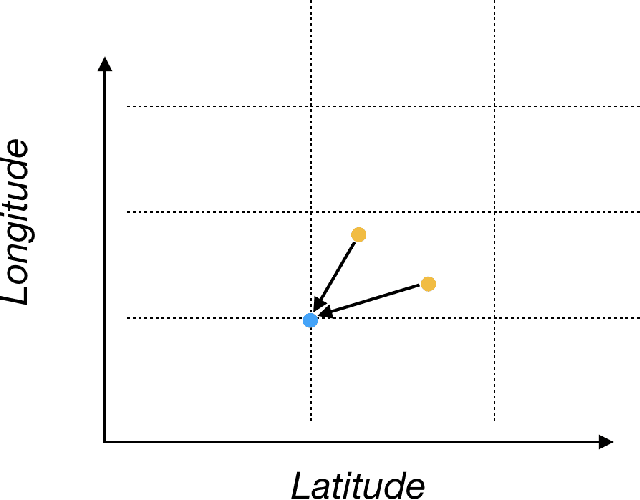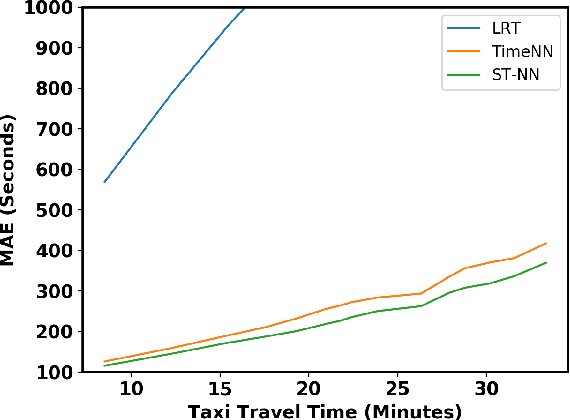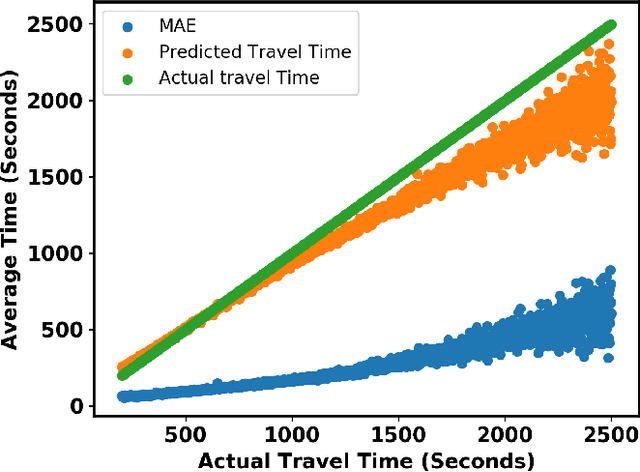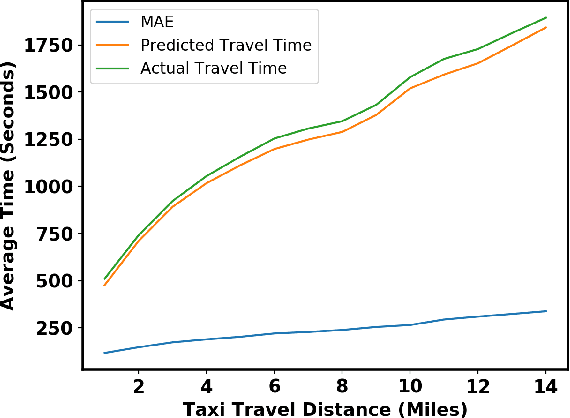Qin
A Better Match for Drivers and Riders: Reinforcement Learning at Lyft
Oct 20, 2023Abstract:To better match drivers to riders in our ridesharing application, we revised Lyft's core matching algorithm. We use a novel online reinforcement learning approach that estimates the future earnings of drivers in real time and use this information to find more efficient matches. This change was the first documented implementation of a ridesharing matching algorithm that can learn and improve in real time. We evaluated the new approach during weeks of switchback experimentation in most Lyft markets, and estimated how it benefited drivers, riders, and the platform. In particular, it enabled our drivers to serve millions of additional riders each year, leading to more than $30 million per year in incremental revenue. Lyft rolled out the algorithm globally in 2021.
A Unified Neural Network Approach for Estimating Travel Time and Distance for a Taxi Trip
Oct 12, 2017



Abstract:In building intelligent transportation systems such as taxi or rideshare services, accurate prediction of travel time and distance is crucial for customer experience and resource management. Using the NYC taxi dataset, which contains taxi trips data collected from GPS-enabled taxis [23], this paper investigates the use of deep neural networks to jointly predict taxi trip time and distance. We propose a model, called ST-NN (Spatio-Temporal Neural Network), which first predicts the travel distance between an origin and a destination GPS coordinate, then combines this prediction with the time of day to predict the travel time. The beauty of ST-NN is that it uses only the raw trips data without requiring further feature engineering and provides a joint estimate of travel time and distance. We compare the performance of ST-NN to that of state-of-the-art travel time estimation methods, and we observe that the proposed approach generalizes better than state-of-the-art methods. We show that ST-NN approach significantly reduces the mean absolute error for both predicted travel time and distance, about 17% for travel time prediction. We also observe that the proposed approach is more robust to outliers present in the dataset by testing the performance of ST-NN on the datasets with and without outliers.
 Add to Chrome
Add to Chrome Add to Firefox
Add to Firefox Add to Edge
Add to Edge